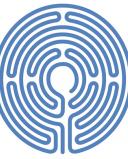Mindfulness
Easy Ways to Practice Mindfulness
6 steps to staying in the present moment
Posted June 9, 2016

Mindfulness is a major buzzword these days, representing a state of living in the moment that many of us aspire to even as we berate ourselves for spacing out, forgetting something, or wasting time on our phones. We tend to think of mindfulness as a difficult pursuit requiring time, commitment, training or maybe even a special cushion. But none of that is necessary. Mindfulness is possible for all of us.
Mindfulness is simply paying attention to the present moment in a curious and nonjudgmental way. Each time we are able to step away from the pinball game in our mind and focus on the present, we give ourselves the best possible chance to make the best possible choice, whatever that may be.
And the best thing? When we (inevitably) forget to pay attention, it doesn't mean we've failed. There is no way to fail at mindfulness, which is one of its many gifts. What it does mean is that we have another chance to step back into the present moment.
The most effective way to get better at noticing when you've left the present is to practice mindfulness in small ways as often as you can. Here are six simple tips to get you started:
Start when it's easy. Many people get interested in mindfulness as a way to deal with stress or difficult situations, and this is a great idea. However, trying to be mindful for the first time in the middle of a crisis is a lot like trying to score the game-winning goal when you've never gone to a single practice. Don't make it harder for yourself! Start with the pleasant moments, and you'll be ready to deal with life's challenges when they come your way.
Pay attention to something you do every day. A great way to start is to pick one or two activities you do every day – such as brushing your teeth, riding the bus to work, or reading a book to your children at bedtime – and get in the habit of paying attention to what you're doing. Your mind will wander, possibly within a few seconds, but don't sweat it. Just bring your attention back to your teeth or the book.
Approach situations with curiosity. If you're not sure how to respond to a situation, or if you're feeling frustrated, try getting curious about what is happening instead. You can't be angry and interested at the same time. Not only will your curiosity help you get out of a difficult headspace, but it will likely help you gain a little more clarity so you can make the most informed choice about how to move forward.
Remember the four T's. Those stand for: transitions, teatime, toilet, and telephone. I've expanded on this idea from Meena Srinivasan, author of Teach, Breathe, Learn: Mindfulness In and Out of the Classroom. Each time you are moving from one activity to the next, drinking tea or coffee, using the bathroom, or checking your phone, take a couple deep breaths and come back to the present moment.
Breathe whenever you can. Breathing is a key mindfulness practice because it is something we always do out of necessity, and it's also a good way to bring our awareness back to the here and now. Taking three or four deep breaths (and paying attention to them) at any given moment can help you calm down and focus.
Ground yourself physically. If concentrating on your breathing isn't quite enough, sit down and notice how the chair feels under your body. Put your hands flat on the counter or a table, and notice how the hard, cool surface feels. Keep a small stone handy and run your fingers across it. These and similar actions will bring your awareness into the present.
As you practice moments of mindfulness on a regular basis, you will notice that they come more naturally and easily to you. You'll be more likely to slow down at critical moments in the day, and you'll find it much easier to take a few deep breaths so you can respond thoughtfully rather than react hastily to a fussy child or difficult colleague.
Don't get me wrong – you'll still forget to be mindful more often than you'd like, and you'll still have moments that you wish you had handled differently. But you'll also be able to get back on track more quickly and let go more easily than before.
Here are a few of my favorite mindfulness resources:
Books
• Real Happiness: The Power of Meditation: A 28-Day Program by Sharon Salzberg
• 10% Happier: How I Tamed the Voice in My Head, Reduced Stress Without Losing My Edge, and Found Self-Help That Actually Works – A True Story by Dan Harris
• Mindfulness for Beginners: Reclaiming the Present Moment – and Your Life by Jon Kabat-Zinn




